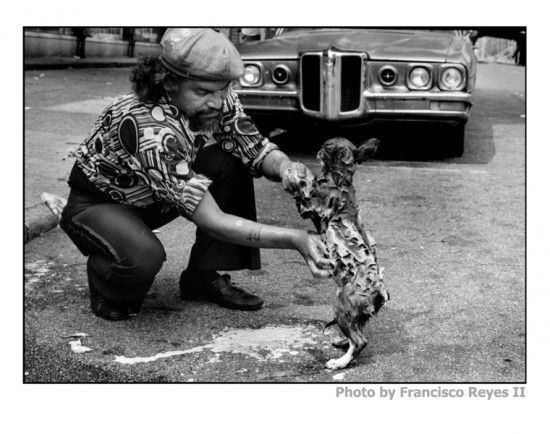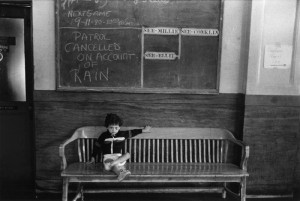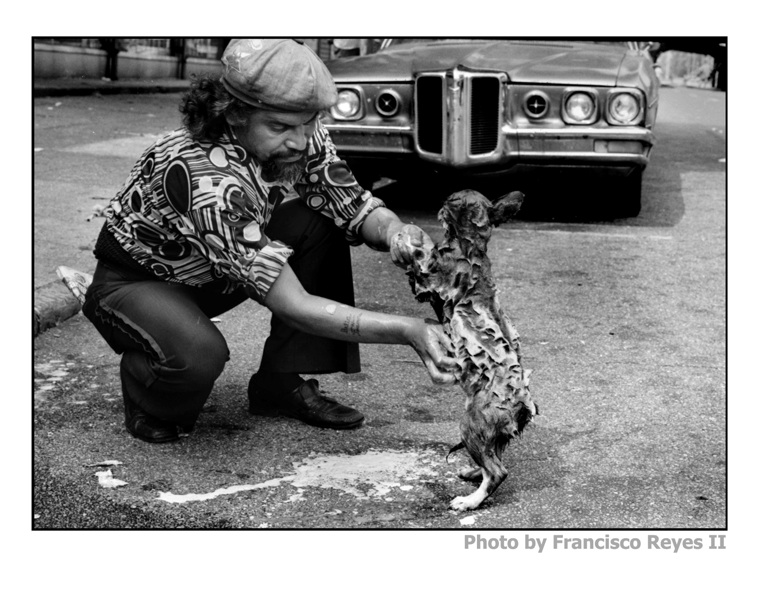
Photo exhibit will feature insiders’ view of ’70s and ’80s South Bronx
A chance meeting at a photo exhibit at Hunter College’s Center for Puerto Rican Studies in 2010 led six South Bronx photographers who have shared a common vision of life in the neighborhood for over thirty years to join forces for the first time.
David Gonzalez, Angel Franco, Ricky Flores, Edwin Pagan, Francisco Reyes II, and Joseph Conzo Jr., whose black and white photos were featured at the Hunter exhibit, had spent the 1970s and 1980s documenting the area and its people. But although they had crossed paths while living in and photographing the South Bronx over the years, they had not had the chance to work together.
But when they met at Conzo’s exhibit, they realized they had been photographing some of the same places all along, just from different perspectives.
Flores noticed that one of Conzo’s photos featured a bodega he had photographed extensively during the ’80s.
Gonzalez, an award-winning writer for The New York Times, posted a photo on Facebook he had taken of a window in his childhood home on Beck Street. Flores responded by posting a photo he had taken of the same window, from a different angle.
Flores posted a photo of the building at 800 Fox Street in Longwood burning down. Coincidentally, it had been one of Conzo’s favorite hangouts.
Realizing the commonalities in their work, the men decided to pool their visions as photographers, and called their collective Seis del Sur, or Six From the South.
The name,” says Flores, “is a reference to the 6 train that runs through the community, and the fact we are six Boricua men from the South Bronx.”
Each brings his own distinct vision of the neighborhood to the group. Franco, the oldest of the six, spent his time off from work as a photojournalist in the ’70s following officers from the 46th Precinct, whose violent reputation led it to be labeled “The Alamo.” Today, with a police scanner in his car, Franco continues the work he began in the Fordham section of the borough, as a photographer for the Times.

Pagan, a filmmaker and cinematographer, and Flores, a photojournalist for The Journal News in Westchester, first met as teenagers, documenting one of the most turbulent periods in the borough’s history through their photos. Mostly self-taught, they each focused on documenting their surroundings, friends and family.
Pagan recalls sharing his prints with his mother while growing up.
My mom would ask ‘who’s that?’ and I would respond, ‘I don’t know,’” says Pagan, who was accustomed to taking his camera everywhere, though at the time he did not consider what he was doing an art form.
I was just excited and passionate about taking photos,” he explains.
Reyes, who lived in the South Bronx during the early ’70s while working there as a street photographer, taught photography at United Bronx Parents, the organization Conzo’s grandmother, community activist Evelina Antonetty, helped establish. Growing up, Conzo looked up to Reyes as a mentor. After 35 years of friendship, the men still take photographs together.
Conzo was a chubby kid with an Angela Davis afro who picked up his first camera at the age of nine. Early on in his career, he trained his lens on Latin music stars like Tito Puente and Charlie Palmieri, and later documented the birth of Hip Hop, taking the genre’s “baby pictures,” as Gonzalez dubbed them in a 2005 Times article he wrote about Conzo.
Like the rest of the Seis, Conzo took photos of his friends, family and surroundings, during a time when many photographers from elsewhere were sent to cover the South Bronx on assignment. For him, “the group’s pictures represent what they saw and felt, going beyond the urban blight that others tended to focus on.”
The group’s first show is slated for early summer, and has been two years in the making. One of the primary objectives, says Gonzalez, will be to try to dispel the negative light the South Bronx has been cast in over the years.
These pictures are our story, told from inside the neighborhood and our hearts,” says Gonzalez.
When Gonzalez returned to Longwood in 1979 after four years studying at Yale, he discovered that the landscape of his youth had been obliterated. To cope with the shock, he turned to his camera, to try to make sense of the changes.
Ultimately, I chose to take photos of life and people,” he said. “What distinguishes our work from that of so-called ‘parachute photographers,’ was that we focused on signs of life, as opposed to the rubble.”
The show will be held at the recently founded Bronx Documentary Center in Melrose and will feature a multimedia component, as well as a curriculum to engage young people from local schools. Michael Kamber, founder of the center and a colleague of Gonzalez’ at the Times, views the show as a homecoming and a chance to share the borough’s past with younger audiences.
This post has been altered to reflect the following corrections: Dozens, not hundreds of photos will be exhibited. The group has postponed the exhibit until September.


[…] Six Bronx photographers get overdue homecoming. […]